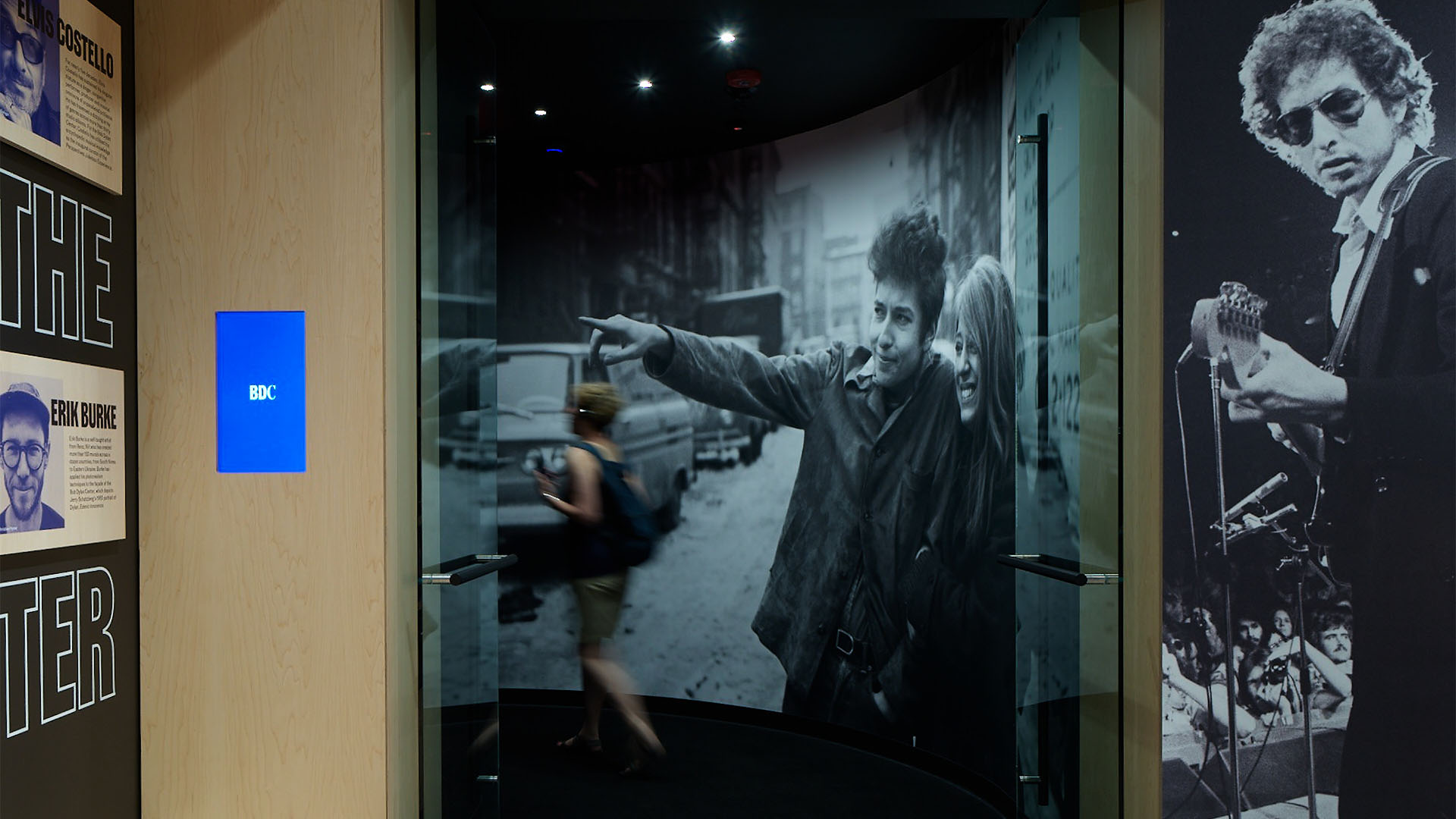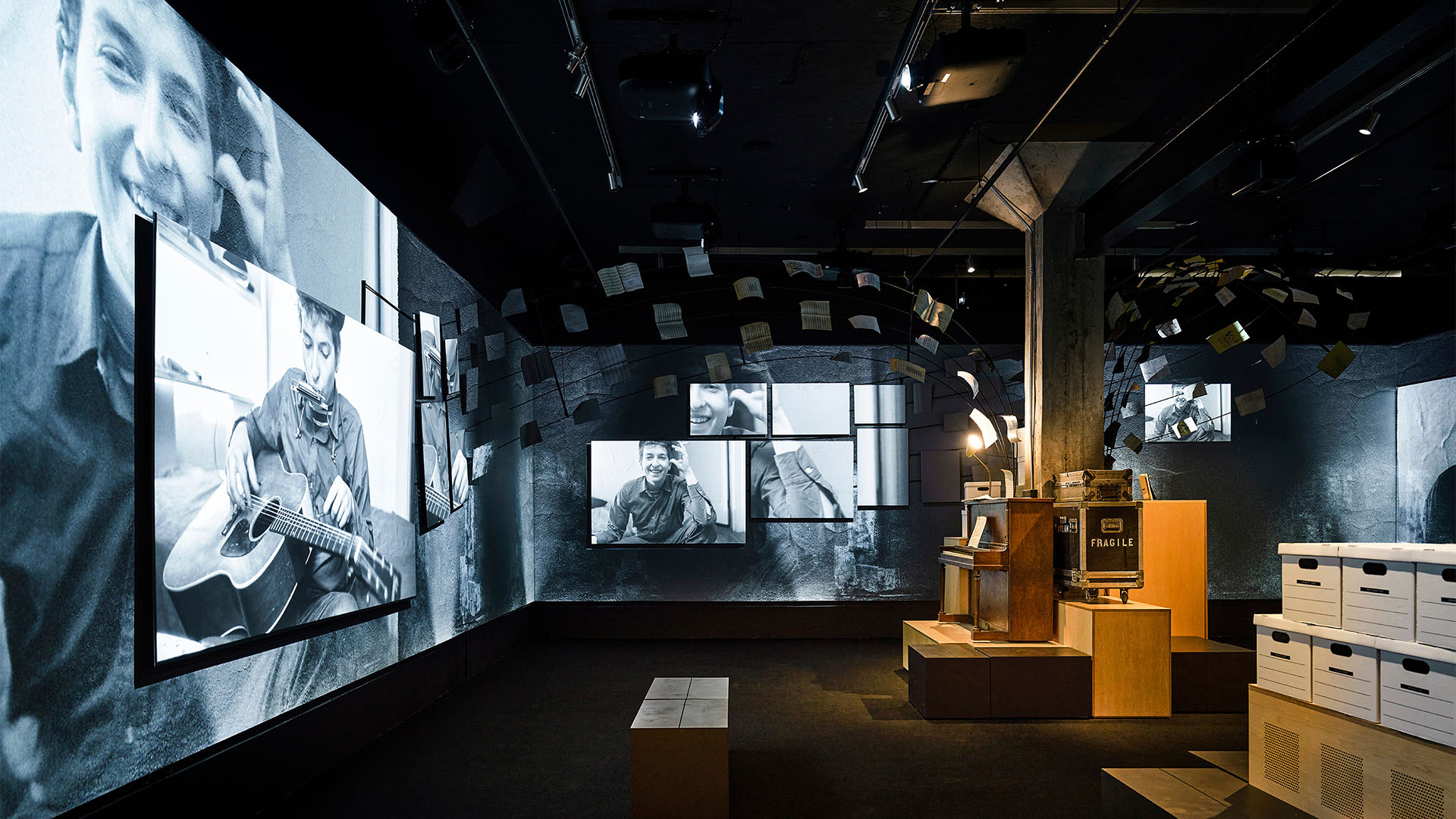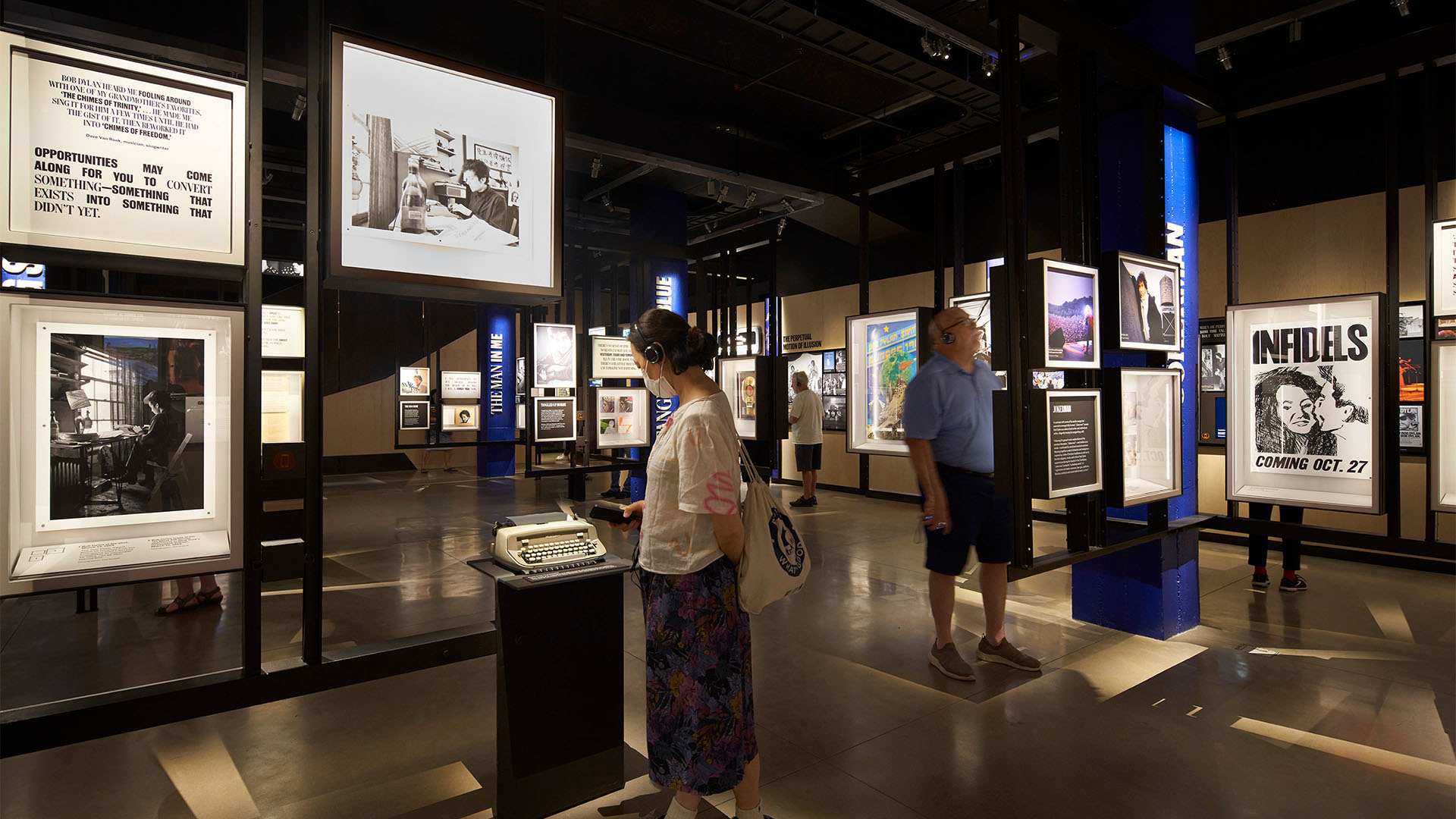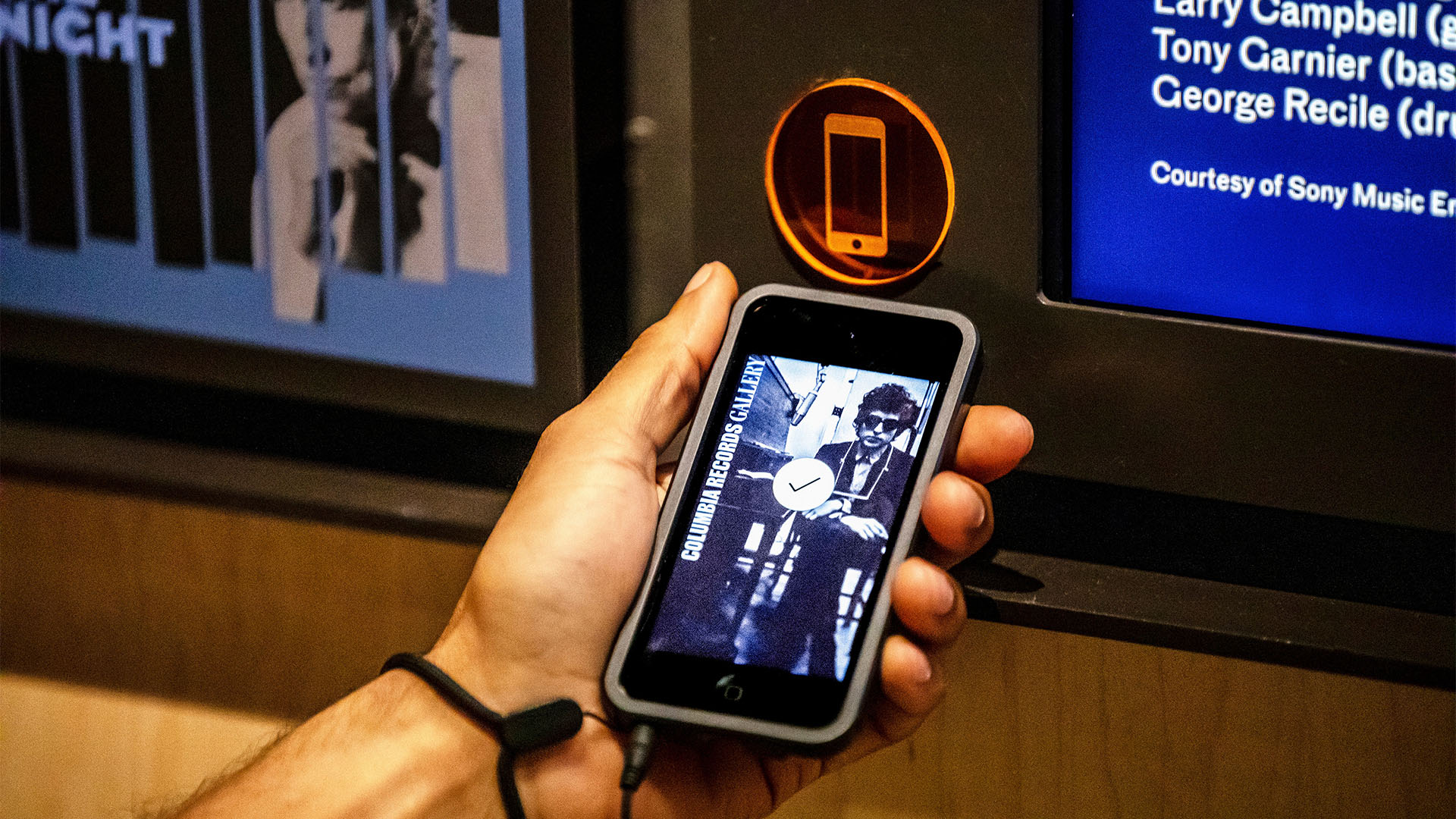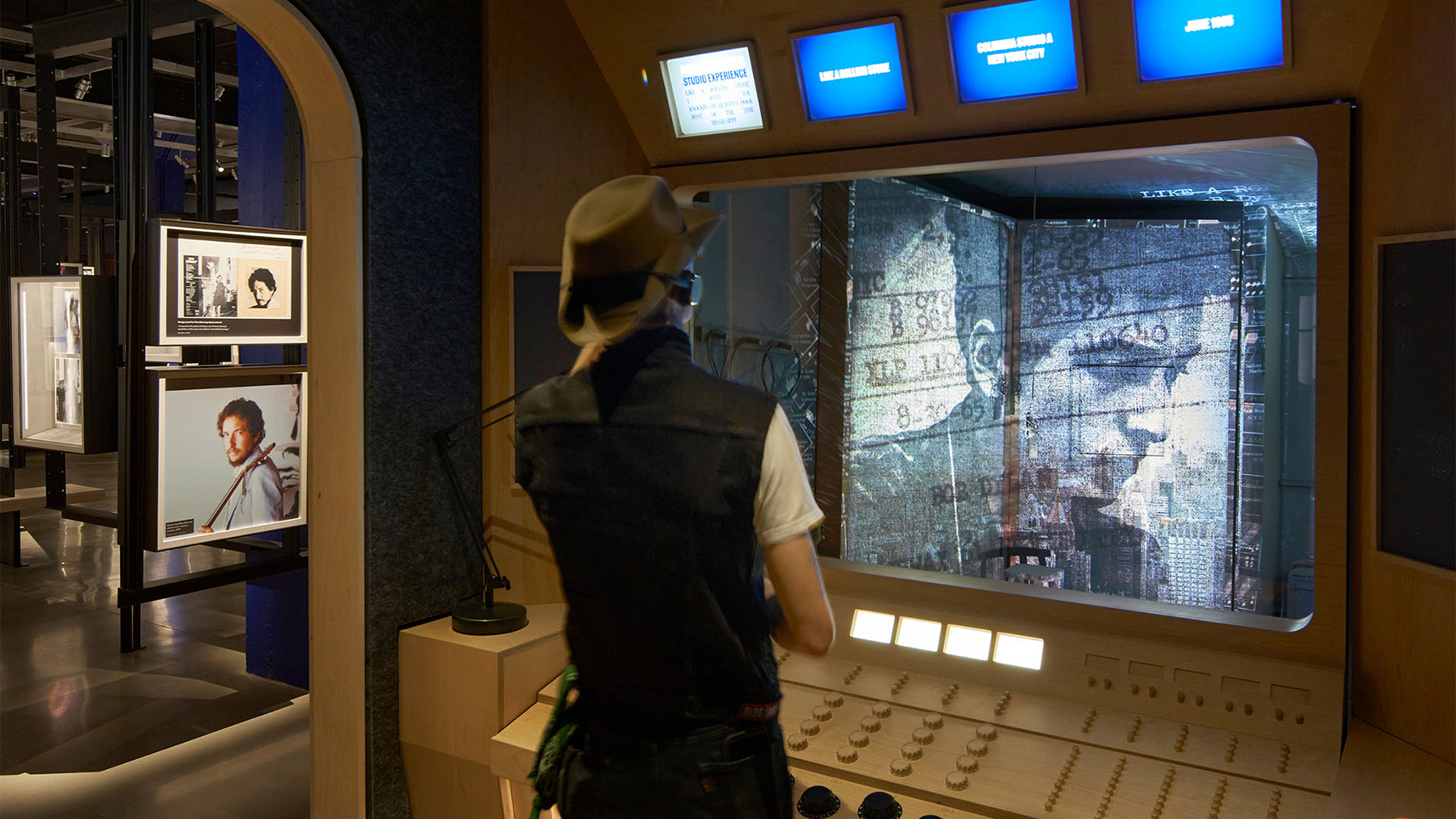Bob Dylan Center
Dedicated to the study and appreciation of Bob Dylan and his worldwide cultural significance, the new Bob Dylan Center traces the creative trajectory of this prolific artist across his 60-year career. Located in the Tulsa Arts District, the Center is a dynamic, multifaceted venue, housing permanent, temporary and traveling exhibitions readily accessible by artists, historians, musicologists, and the general public seeking a deeper comprehension of Dylan’s work, his influences and the offshoots inspired by his legacy.
Agency
Olson Kundig
Practice Area
Client
Bob Dylan Center, George Kaiser Family Foundation
Industry
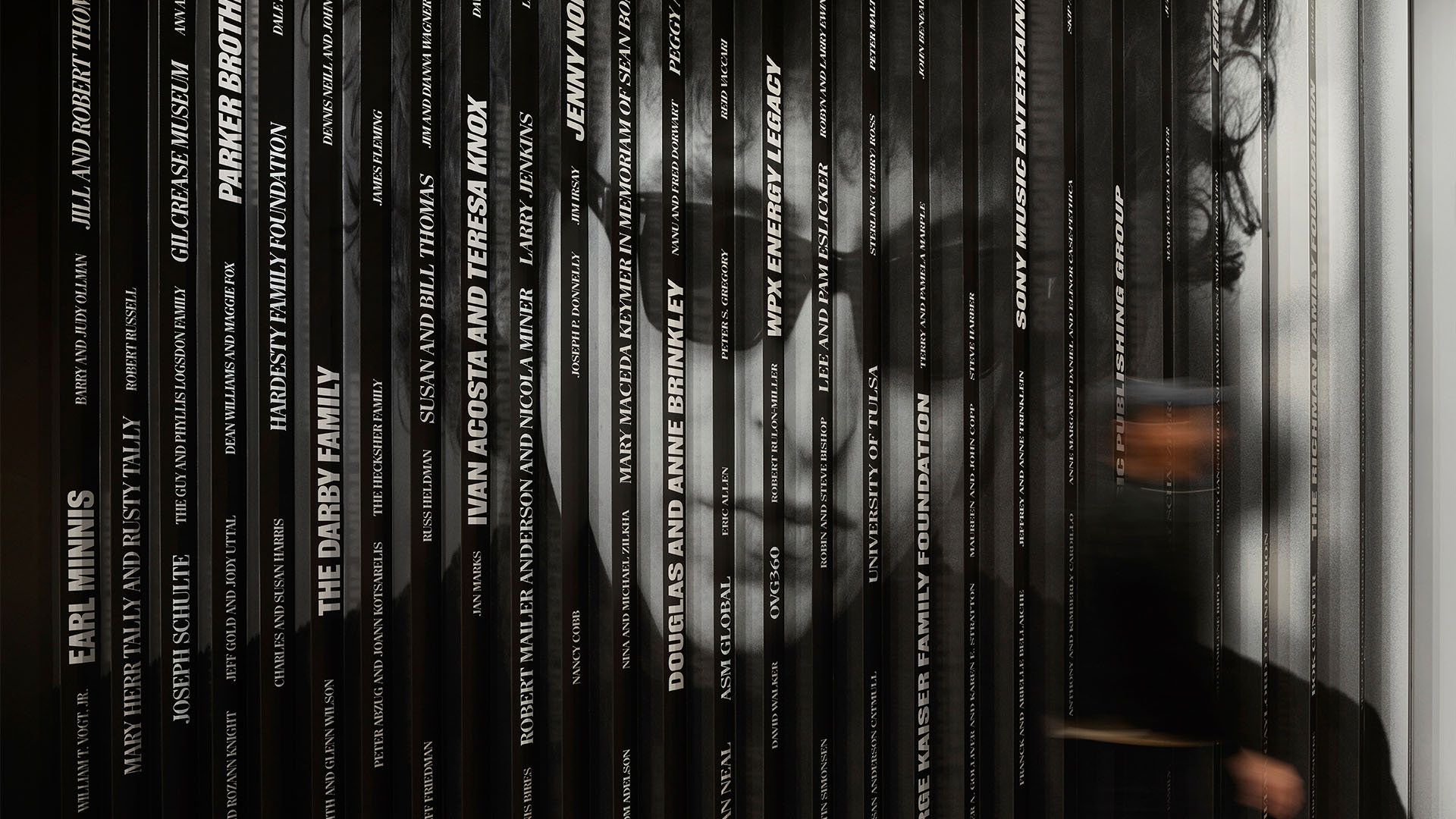
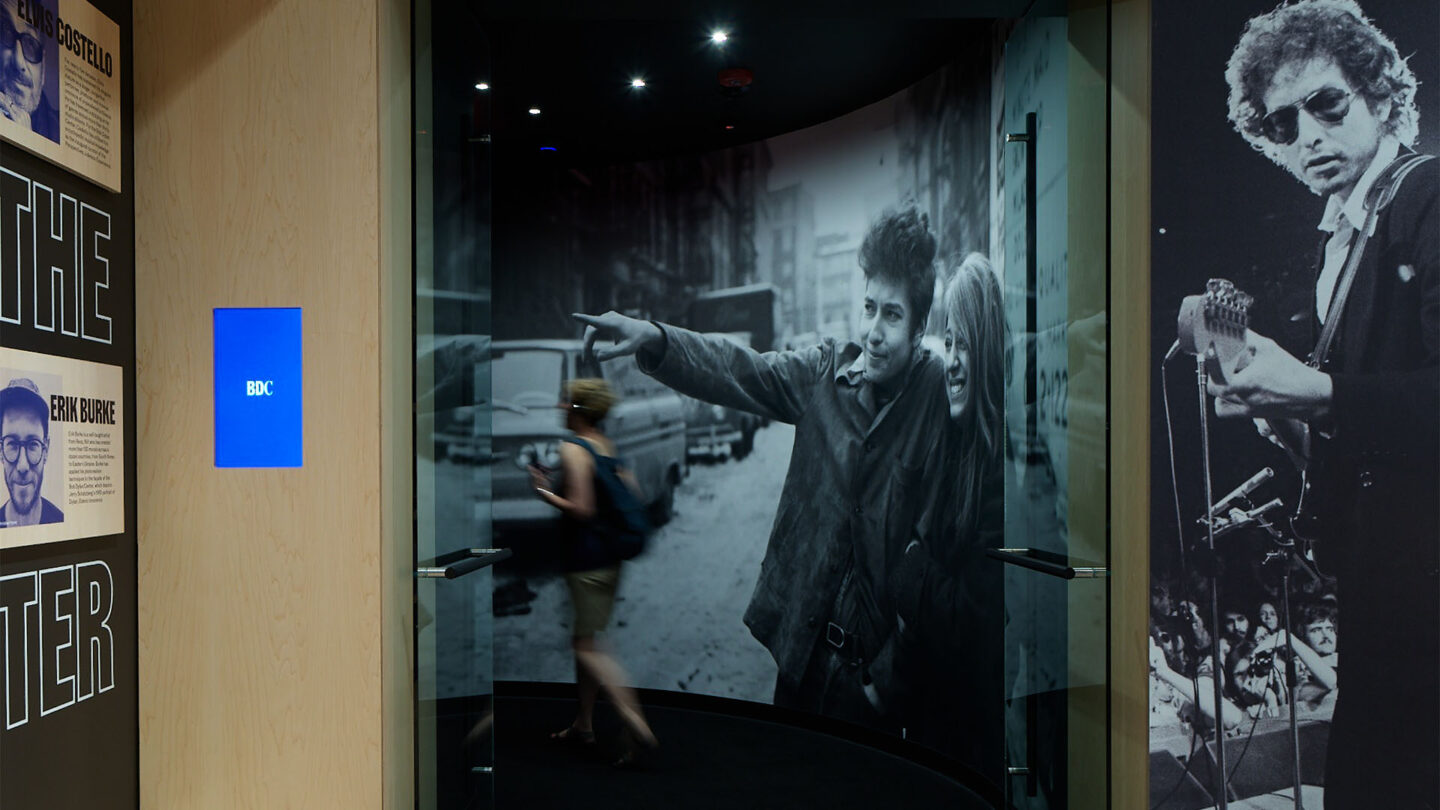
An oversized photograph of Bob Dylan serves as a wayfinding device, inviting guests into the museum gallery spaces.
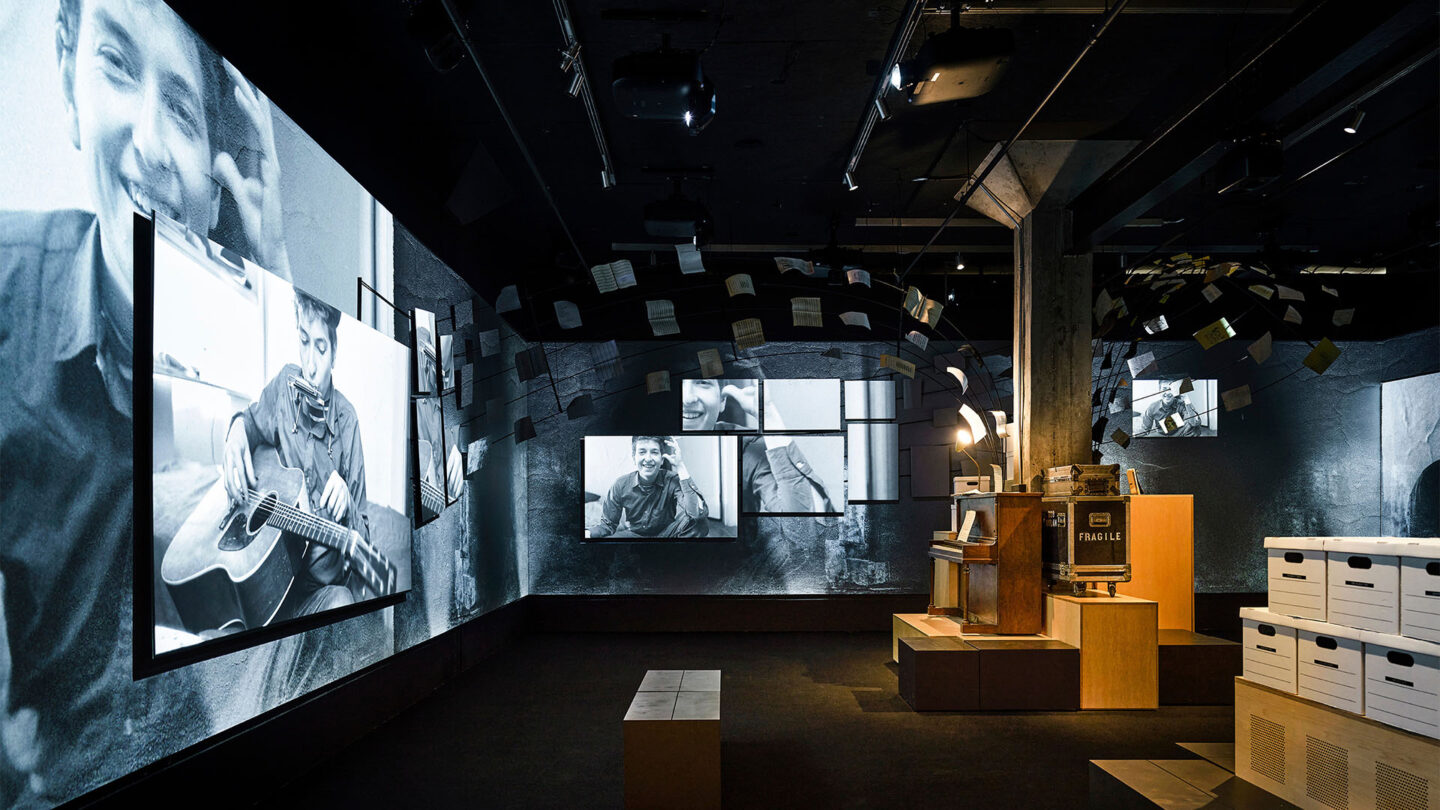
The first immersive multimedia space acts as a common introduction to museum, establishing a
baseline for all visitors.
Project Overview
The Bob Dylan Center serves as the primary public venue for The Bob Dylan Archive, a collection of more than 100,000 items spanning handwritten manuscripts, notebooks and correspondence, films, videos, artwork, memorabilia and original studio recordings. While the Archive’s permanent repository is open only to qualified researchers and scholars, a linear gallery wall and interactive display features nearly 100 items from the collection for visitors to explore.
The Bob Dylan Center aims to be more than a monument to a rock star, an especially difficult task for an artist like Bob Dylan, who resisted explaining himself and often expressed his belief that truth and falsehood are equally valid. Instead, the team chose to highlight themes of artistic output and transformation that visitors can apply to their own lives and creative trajectories. The museum further had to appeal to a wide range of visitors, from those with little knowledge of Bob Dylan to those who consider themselves “superfans.”
Building on the notion of Bob Dylan as a “Master of Change,” the design approach framed Dylan’s life and career as a portrait of transformation. With this in mind, the new Bob Dylan Center would act as the embodiment of continual change, from the building’s architectural approach to its exhibit design and rotating installations. Visitors are invited to move through and around the galleries and activities, directed by their own curiosity, and to return to the museum as items on display change and evolve.
Inspired by films like The Rolling Thunder Review, I’m Not There, and Rashomon – which explore themes of truth and falsehood reflected in Dylan’s life and work – the exhibit design approach features multiple points of view, including filmmakers, historians, a rock star, a graffiti artist, archivists, and dozens more. The result is a “cubist portrait” that depicts Dylan from many angles, creating a collective perspective of his artistic contributions and providing the foundation for interactive storytelling. Exhibit cases and galleries are designed for flexibility, allowing for a rotating cycle of artifacts and stories to be highlighted throughout the museum. Interactive experiences and an immersive audio tour allow visitors to control their level of engagement and dive deeply into their specific areas of interest.
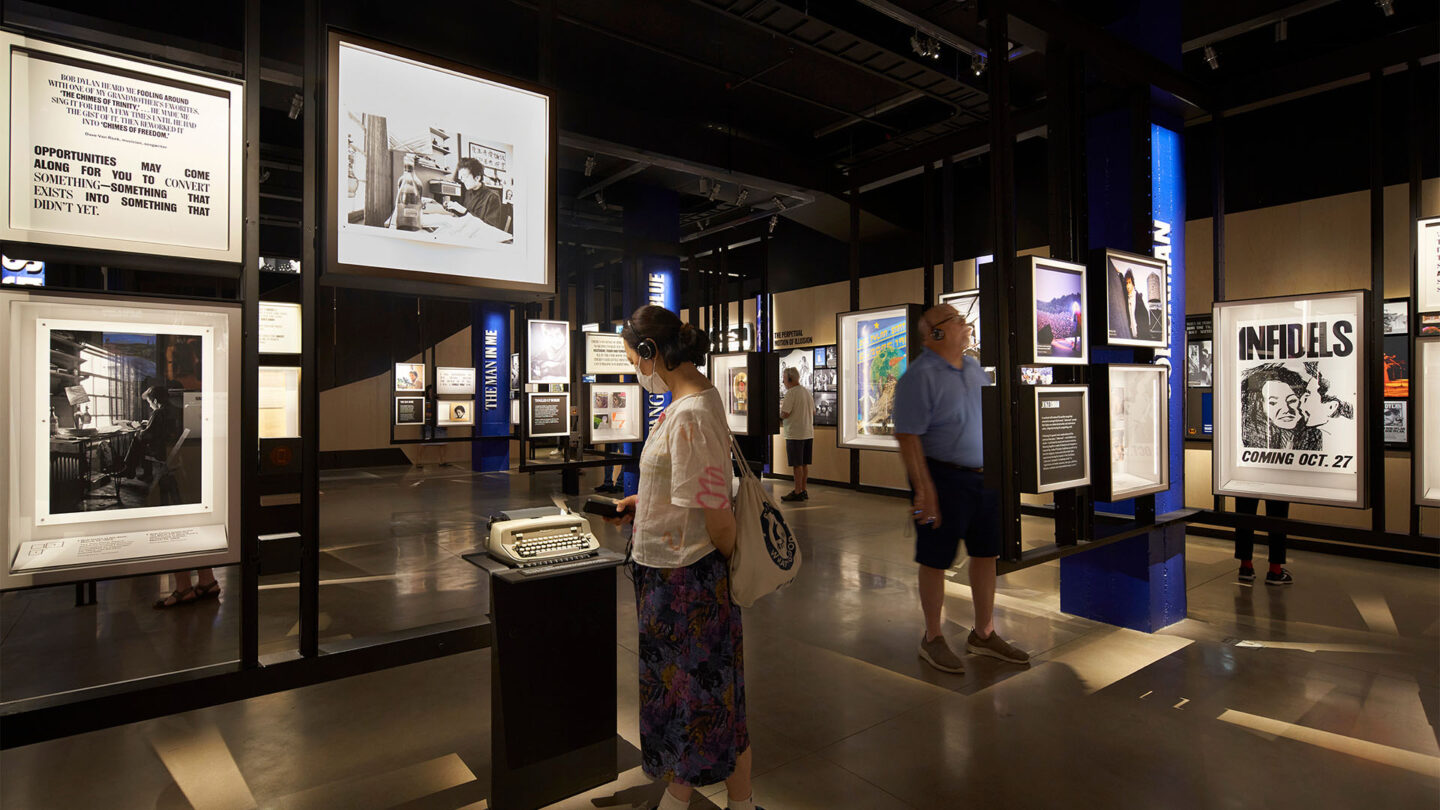
Existing concrete columns are utilized as armatures for exhibits that dive deeply into six iconic Dylan songs, including artifacts, manuscripts, mementos and rare recordings that illustrate his artistic process.
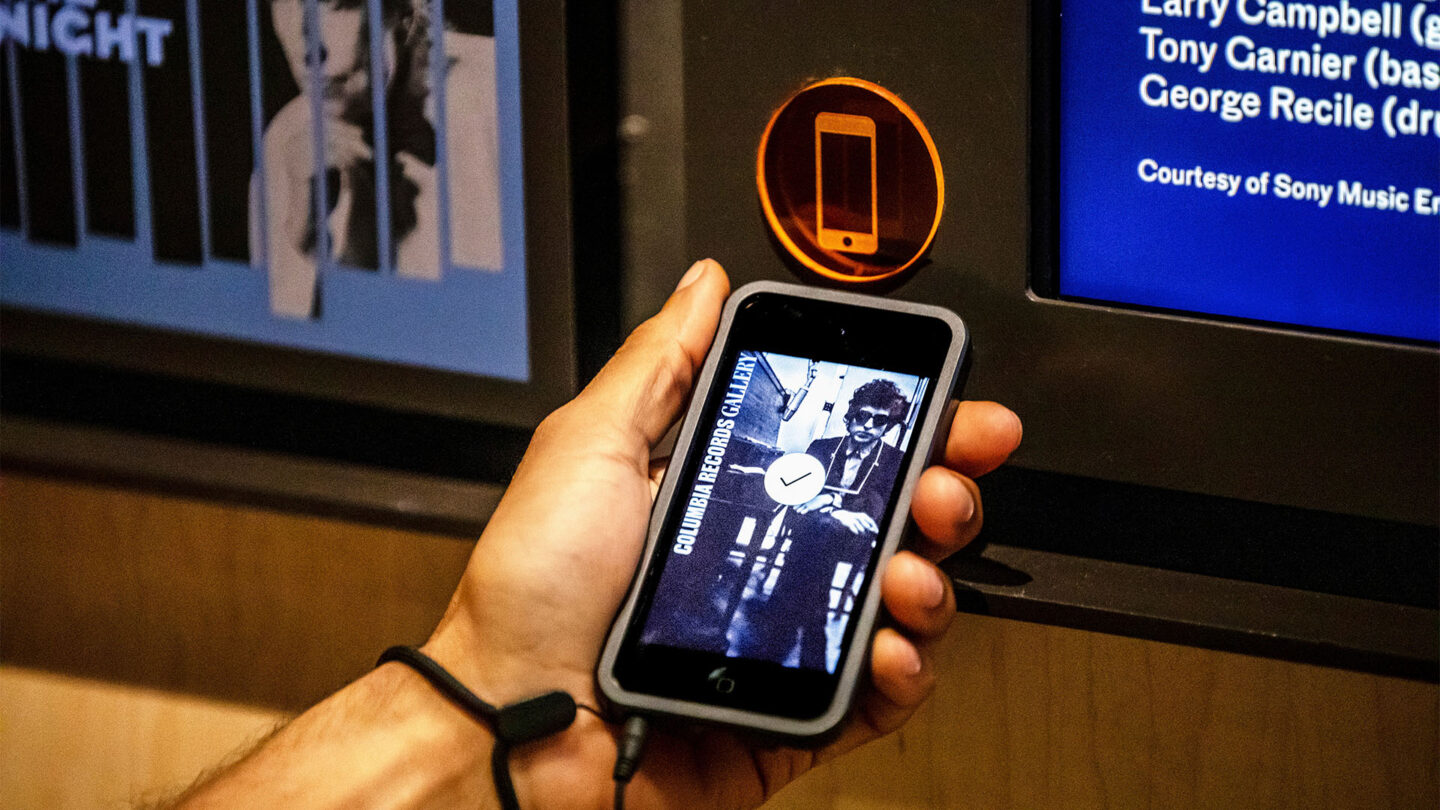
A handheld and intuitive audio tour allows visitors to curate their own journey through the museum.

Exhibit cases are designed for ease of updating, allowing items on display to change and highlight new stories.
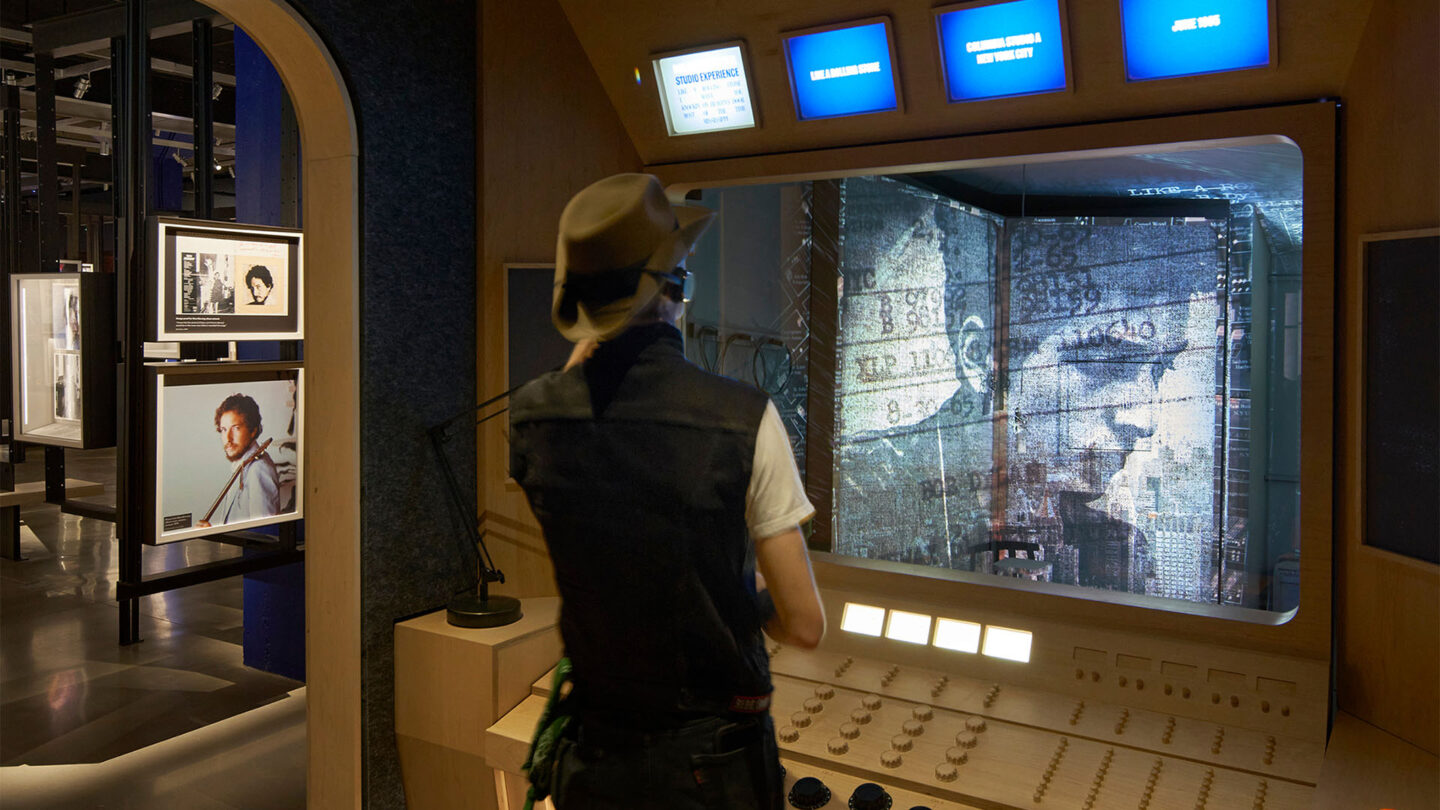
A recording studio environment allows visitors to manipulate songs, change and alter different musical elements, and learn about the many layers of production.
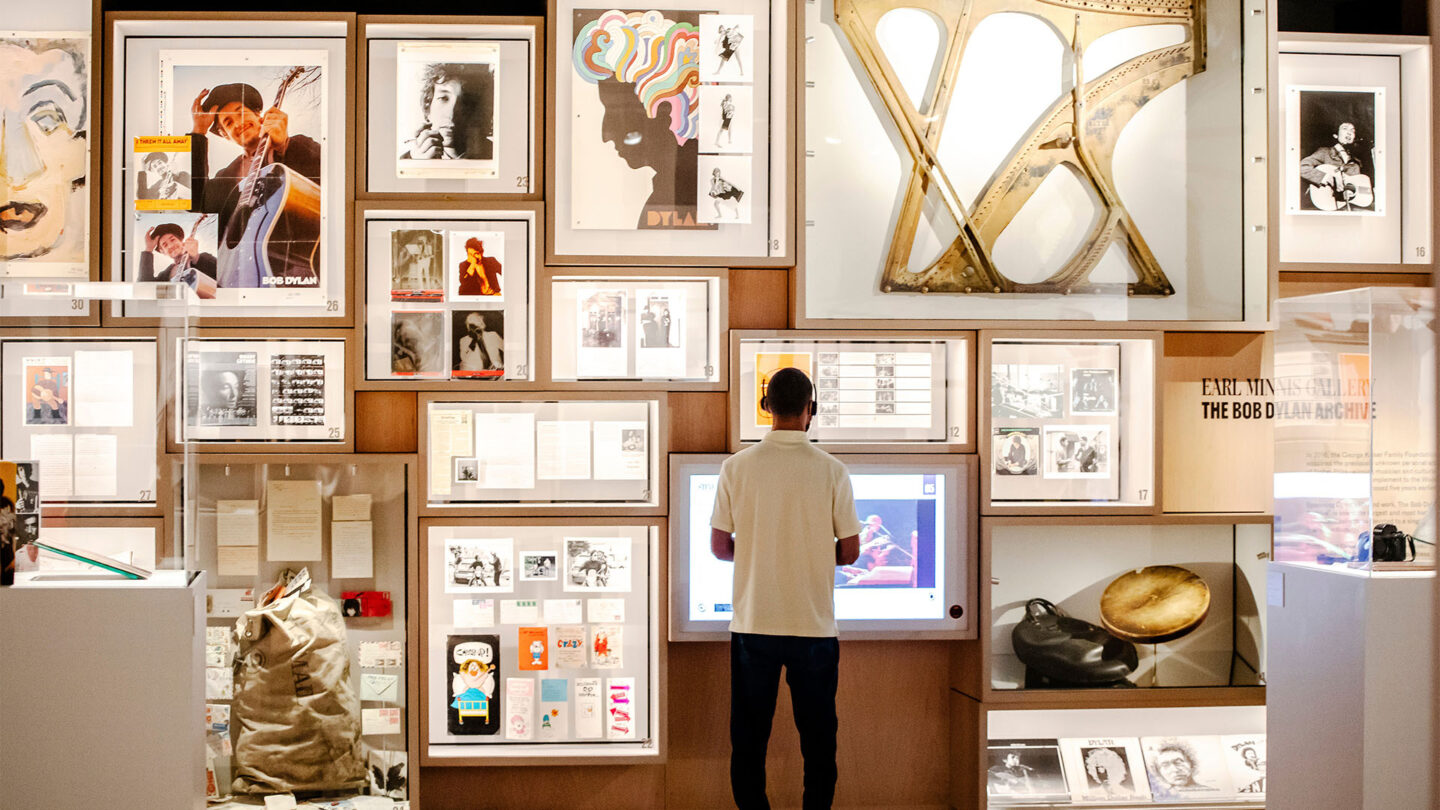
An expansive gallery wall turns the Bob Dylan Archive inside-out, showcasing a rotating selection of items from the collection with a digital interactive platform to reveal deeper stories behind objects
Project Details
Design Team
Alan Maskin (design principal), architecture team: Stephen Yamada-Heidner, AIA, LEED® AP, (principal), Holly Simon (project architect), exhibits team: Marlene Chen, AIA, LEED® AP, (project manager), Ryan Botts, Brian Havener, Karen Duan and Aiym Zhumasheva, (exhibit design staff)
Collaborators
CREO Industrial Arts (exhibit fabricator), Black Buffalo Ironworks (gate fabricator), 59 Productions, (installation, interactive and av design), Art Processors (audio guide), BBI Engineers (audio/visual integration); Exhibits: Jennifer LeBeau (filmmaker), Sean Wilentz, (historian and author), Lewis Hyde (author), Ellipse Studio (content and copywriting), Tillotson Design Associates (lighting design), Coffman Engineers (structural engineer); Brown Bag Creative (graphic production), Lilly Architects, (architect of record), Crossland (general contractor), Wallace Design Collective (structural engineer); Phillips + Gomez (MEP and fire protection engineer), Erik Burke (façade mural artist)
Photo Credits
photos within BDC: various, including Jerry Schatzberg and Lisa Law; photos of BDC: Matthew Millman and Joseph Rushmore (courtesy of Art Processors), Jennifer LeBeau, 59 Productions (videography)
Open Date
May 2022
